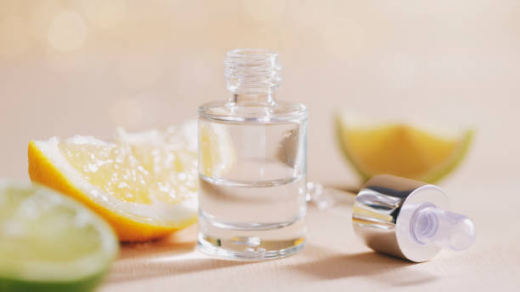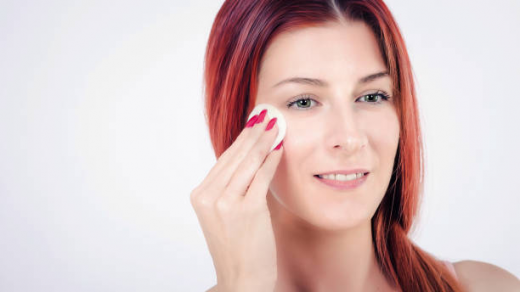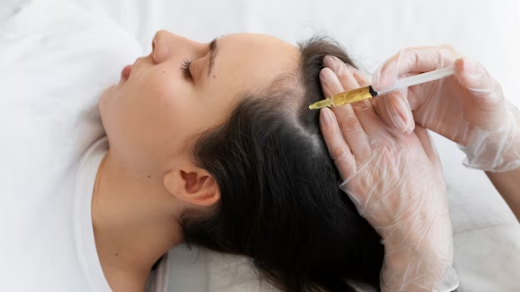In the quest for youthful and radiant skin, understanding the key differences between exosomes and growth factors can provide the clarity needed for optimal skincare decisions. These two advanced skin therapies have gained significant attention, promising unparalleled benefits in rejuvenating and maintaining the skin’s vitality.
What Are Exosomes?

Exosomes are tiny vesicles secreted by cells that play a crucial role in intercellular communication. They are essentially nano-sized carriers of proteins, lipids, and genetic material, capable of influencing the behavior of recipient cells. In the skincare industry, exosomes are celebrated for their ability to promote wound healing, skin regeneration, and combating signs of aging. This advanced technology captures the essence of cellular communication, offering a sophisticated approach to skin wellness.
The efficacy of exosomes lies in their composition, which includes growth factors, cytokines, and other bioactive molecules. These components work synergistically to repair damaged skin, enhance collagen production, and improve overall skin texture. Clinical studies have demonstrated significant improvements in skin elasticity, hydration, and smoothness following exosome-based treatments.
Understanding Growth Factors
Growth factors are naturally occurring proteins that play a pivotal role in regulating cellular processes such as proliferation, differentiation, and regeneration. In the context of skincare, these proteins are harnessed to stimulate fibroblast activity, thereby promoting collagen synthesis and skin repair. Growth factors have been extensively studied and are foundational in many anti-aging and regenerative skincare products.
There are several types of growth factors used in skincare, including Epidermal Growth Factor (EGF), Fibroblast Growth Factor (FGF), and Transforming Growth Factor (TGF). Each type has specific functions but collectively, they contribute to the rejuvenation and maintenance of skin health. Incorporating growth factors into a skincare regimen can significantly reduce the appearance of fine lines, wrinkles, and other signs of aging.
Exosomes vs. Growth Factors: Key Differences
While both exosomes and growth factors offer remarkable benefits for the skin, they do so through different mechanisms. Understanding these key differences is essential for making informed skincare decisions:
-
Origin and Composition:
Exosomes are vesicles that carry multiple bioactive molecules, including growth factors, while growth factors are individual proteins. -
Application:
Exosomes are used in topical products and injectable treatments, whereas growth factors are predominantly incorporated into creams, serums, and other topical formulations. -
Mechanism of Action:
Exosomes facilitate cell-to-cell communication and transfer genetic materials, leading to comprehensive skin rejuvenation. Growth factors specifically target cellular processes to stimulate skin repair and regeneration. -
Efficacy:
Exosomes provide a broader range of benefits due to their complex composition, while growth factors offer targeted improvements in skin texture and elasticity. -
Research and Development:
Both fields are rapidly advancing, but exosome technology is relatively newer and holds promise for groundbreaking developments in skincare.
Efficacy and Benefits
The efficacy of exosomes and growth factors in skincare cannot be overstated. Exosomes, due to their ability to carry a cocktail of bioactive materials, offer holistic improvement to skin health. Their multifunctional nature ensures enhanced cell proliferation, reduced inflammation, and accelerated wound healing. On the other hand, growth factors, with their targeted approach, are extremely effective in collagen synthesis and elastin production.
For users looking to address specific skin concerns like fine lines, hyperpigmentation, or loss of elasticity, growth factors provide a focused treatment strategy. In contrast, exosomes cater to a broader range of issues, making them ideal for comprehensive skin wellness and rejuvenation. Individuals striving for youthful, resilient skin often benefit from integrating both therapies into their skincare routines.
Choosing the Best Option for Your Skin
Deciding between exosomes and growth factors depends largely on individual skin concerns and desired outcomes. For those seeking a comprehensive approach to skin rejuvenation, exosomes may provide the edge due to their multifaceted benefits. However, if the goal is to target specific aging concerns or improve skin texture, growth factors could be more appropriate.
Consulting with a dermatologist or skincare professional is advisable to determine the best course of action. These experts can offer personalized recommendations based on skin type, concerns, and goals. Whether opting for exosomes, growth factors, or a combination of both, the result will be a revitalized, healthier complexion.
Conclusion
Both exosomes and growth factors represent the forefront of skincare innovations, each offering unique benefits towards skin wellness and rejuvenation. While exosomes provide a comprehensive and multifaceted approach, growth factors serve as highly effective agents for targeted skin repair and regeneration. Combined, they have the potential to unlock new levels of skin health, making them indispensable in the realm of advanced skincare.
FAQs
What is the main advantage of using exosomes in skincare?
The main advantage of using exosomes in skincare is their ability to deliver a wide range of bioactive molecules that promote overall skin rejuvenation, including enhanced cell proliferation, reduced inflammation, and accelerated wound healing.
Are growth factors safe for all skin types?
Yes, growth factors are generally safe for all skin types. However, it is always advisable to consult a dermatologist before introducing new products to ensure they are appropriate for your specific skin type and condition.
Can I use exosomes and growth factors together?
Yes, using both exosomes and growth factors together can provide complementary benefits for skin health. Exosomes offer broad rejuvenation, while growth factors target specific aging concerns, making the combination highly effective.
How long does it take to see results from exosome treatments?
Results from exosome treatments can vary, but many users report noticeable improvements in skin texture, elasticity, and hydration within a few weeks of consistent use.
Do exosome-based products have any side effects?
Exosome-based products are generally well-tolerated with minimal side effects. However, as with any skincare treatment, it is possible to experience minor irritation or allergic reactions, so it’s important to conduct a patch test and consult with a skincare professional if any adverse reactions occur.



